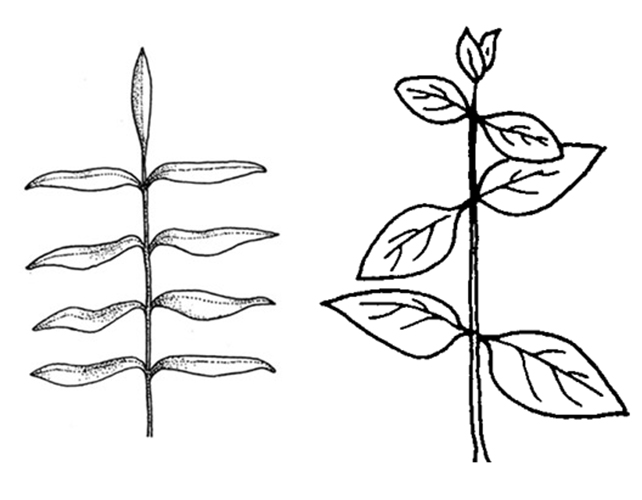Chara L.
muskgrass, stonewort
Characeae
cosmopolitancosmopolitan:
(adj) essentially worldwide in distribution
Chara vulgaris L.
none
not weedy
submersedsubmersed:
see submerged
, highly branched macroscopic algaalgae:
(n) (sing. alga) photosynthetic, eukaryotic, unicellular or complex multicellular organisms, mainly aquatic, lacking true stems, roots, leaves, conducting vessels, and complex sex organs

Algaalgae:
(n) (sing. alga) photosynthetic, eukaryotic, unicellular or complex multicellular organisms, mainly aquatic, lacking true stems, roots, leaves, conducting vessels, and complex sex organs
 with cylindricalcylindrical:
with cylindricalcylindrical:
(adj) forming a nearly true cylinder
, hollow, stem-like branches and 6-16 whorledwhorled:
(n) bearing whorls; a type of leaf arrangement (phyllotaxis) in which leaves are in whorls
 secondary branches at nodal regions. Bearing short or long stipulodes and bractbract:
secondary branches at nodal regions. Bearing short or long stipulodes and bractbract:
(n) a modified leaf near a flower or inflorescence, often reduced, sometimes large and/or petaloid; also glumes, lemmas, and paleae of grass spikelets
 cells. Branches ribbed. Oogoniaoogonium:
cells. Branches ribbed. Oogoniaoogonium:
(n) (pl. oogonia) the female reproductive organ in some algae and fungi, consisting of a large cell that produces female gametes
 produced in axils of branchlets.
produced in axils of branchlets.
lakes, ponds, rivers
Chara and Nitella are freshwater, multicellular, branched macroalgaemacroalgae:
(n) (sing. macroalga) large algae; seaweeds
in the order Charales that are commonly confused with flowering aquatic plants. Chara can be distinguished from Nitella by its musky odor and gritty, bristly feel. Chara contains 244 currently accepted species.